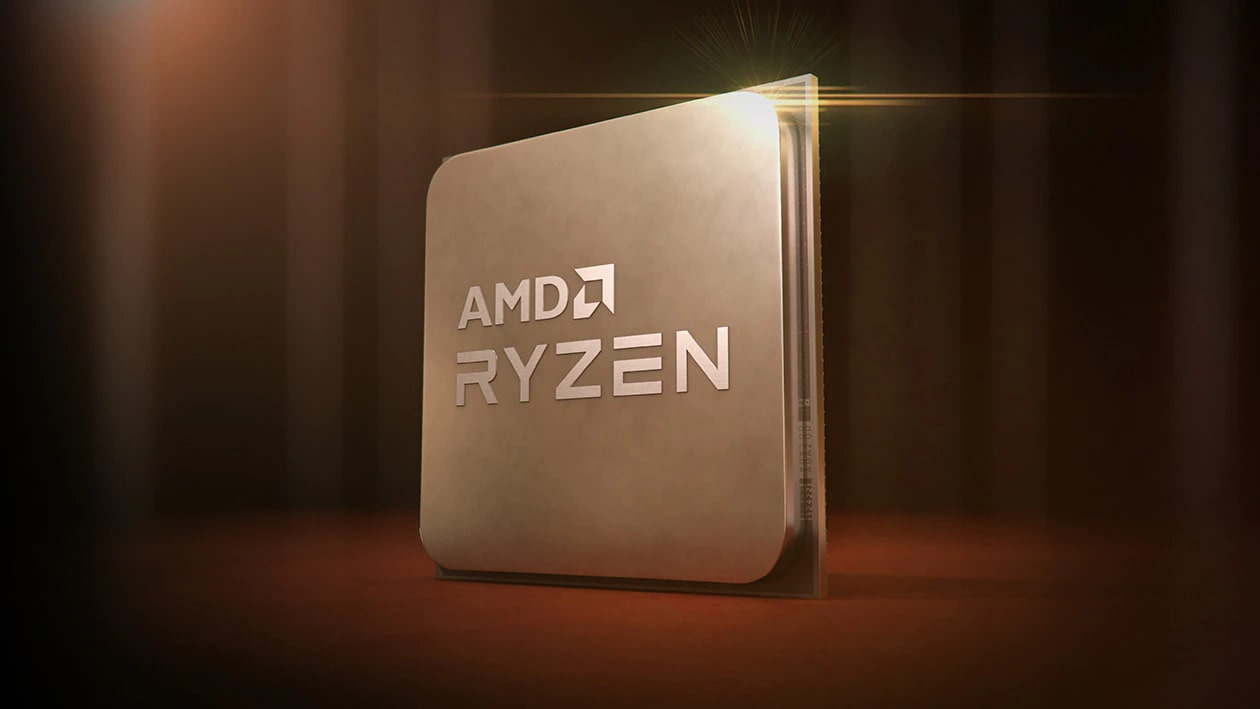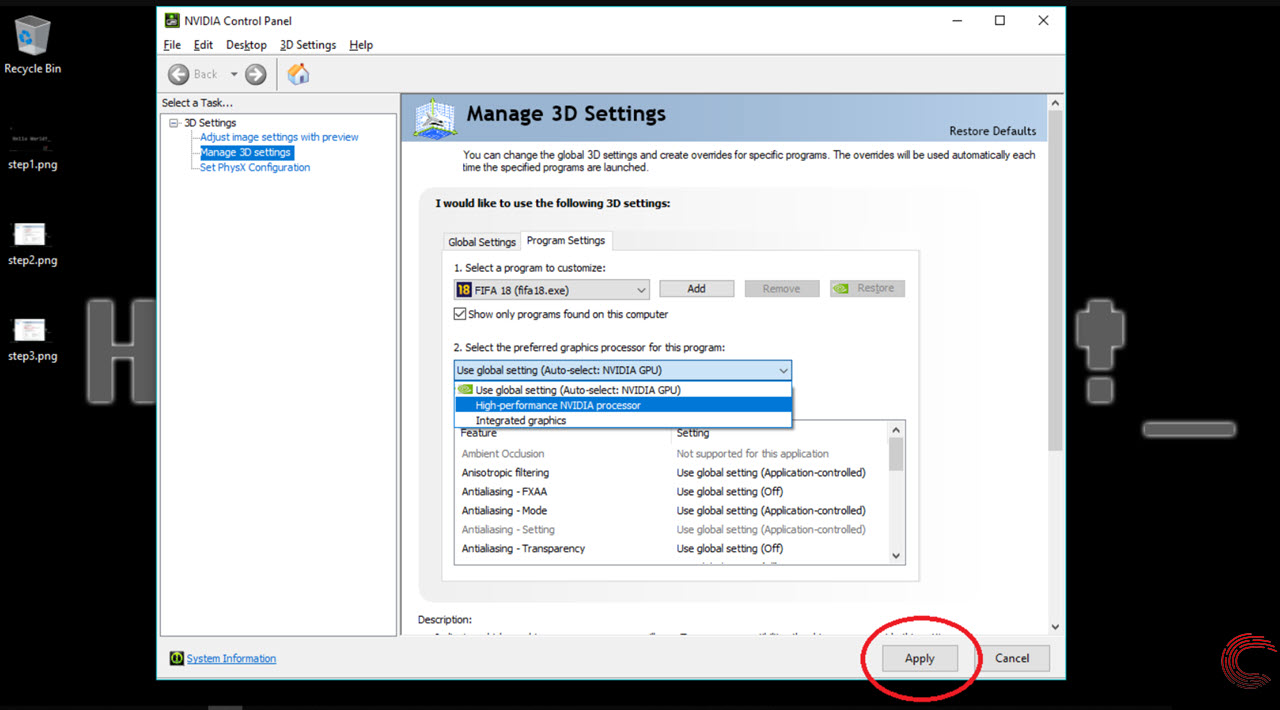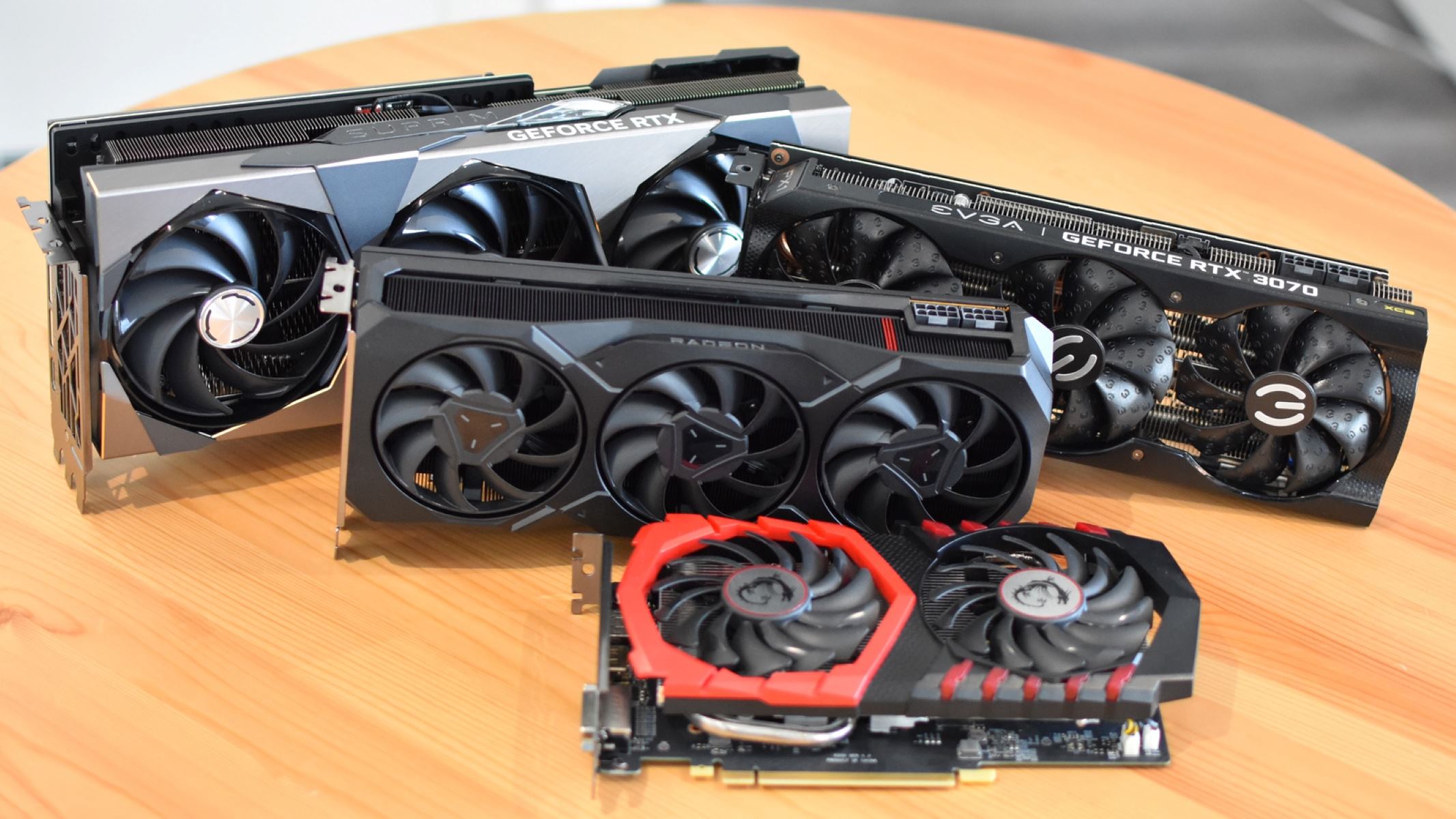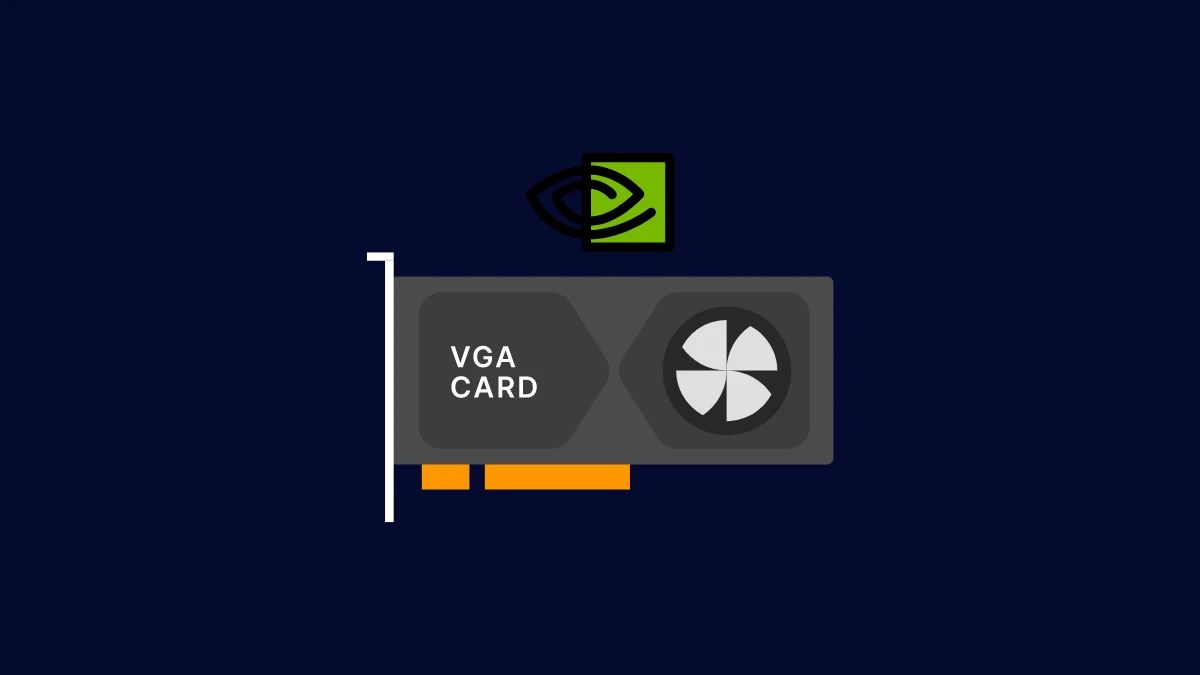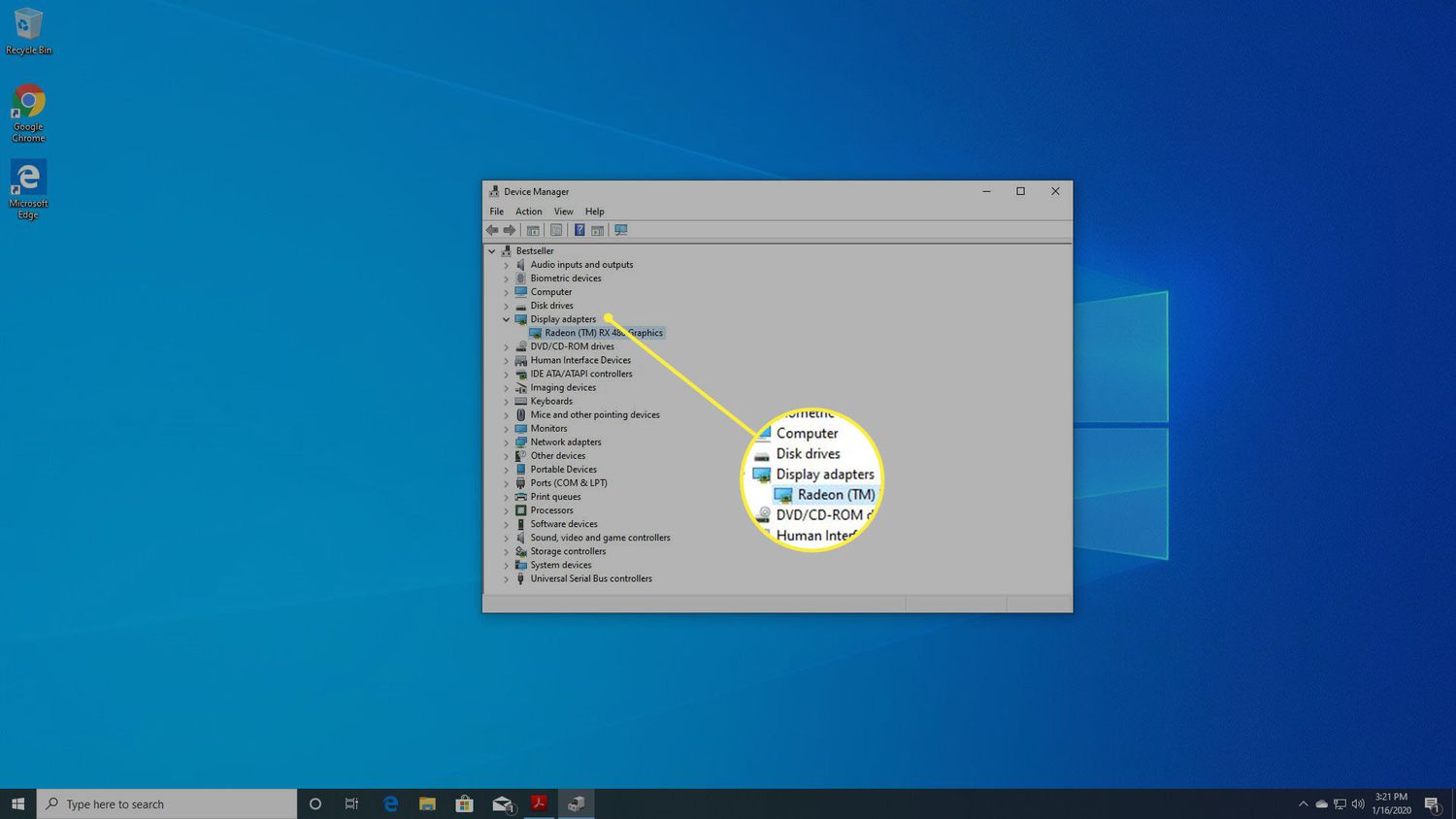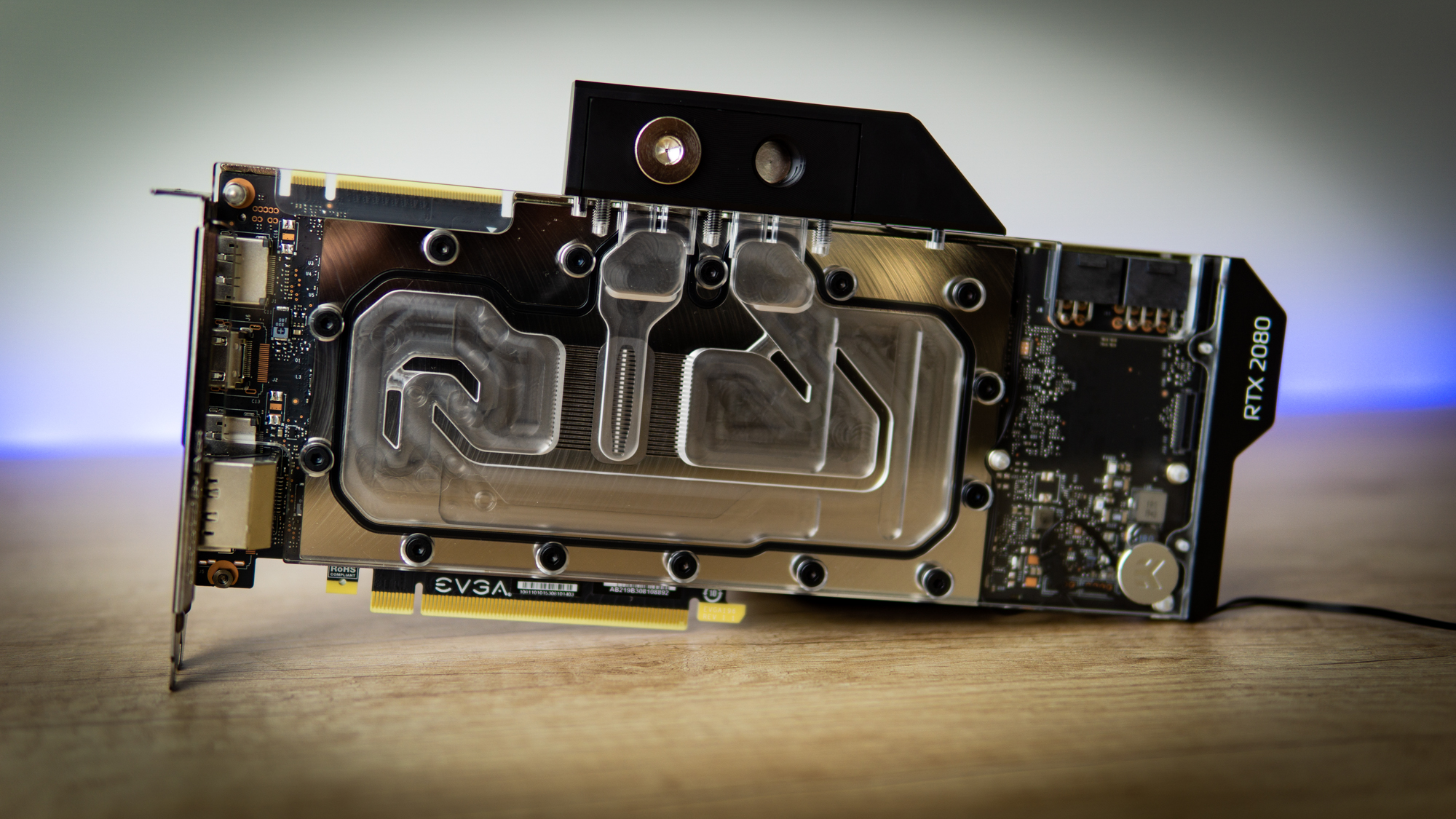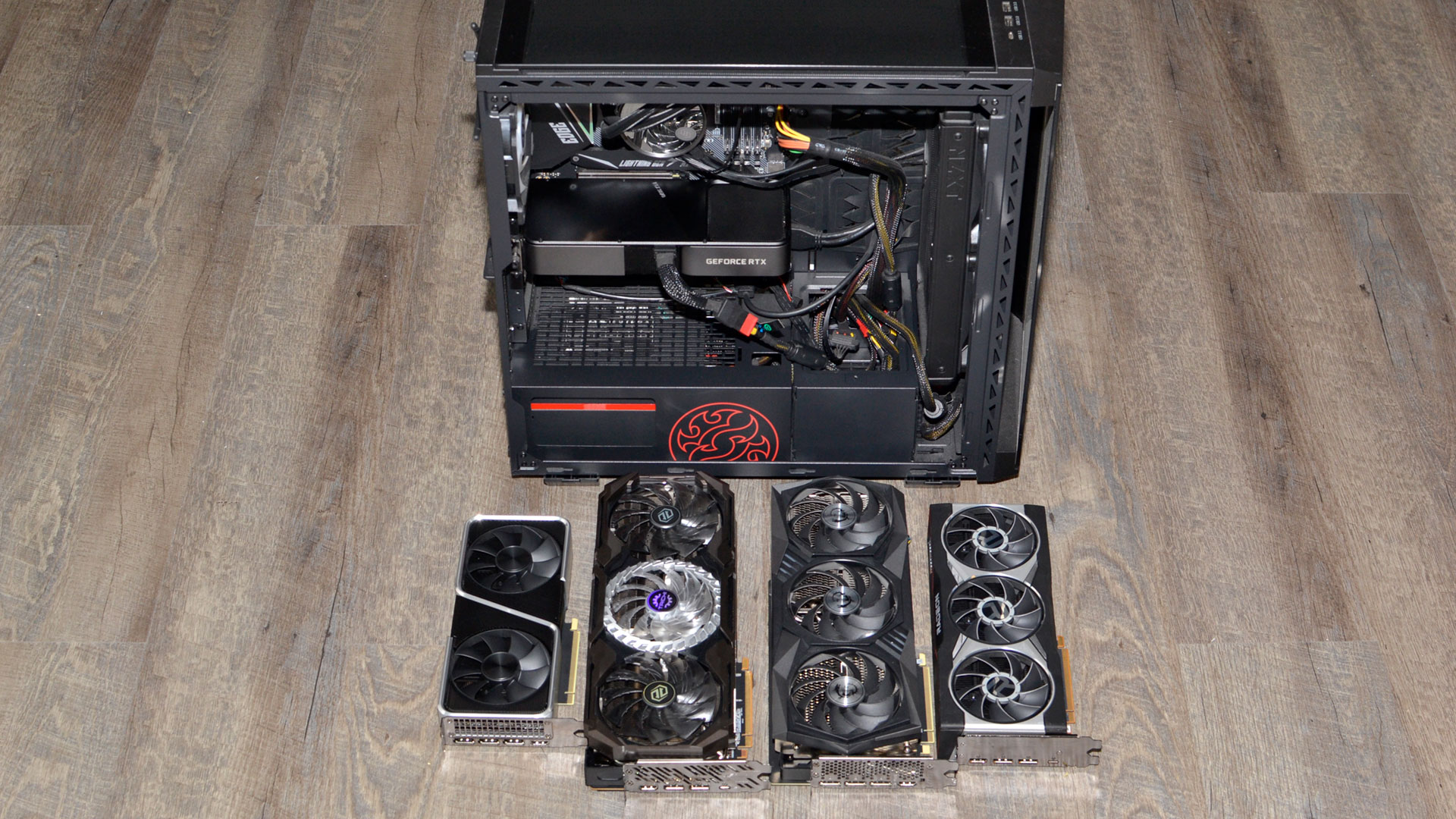Introduction
Welcome to the fast-paced world of graphics cards! If you’re a gaming enthusiast or someone who works with graphic-intensive applications, chances are you’re familiar with Nvidia. Nvidia has been at the forefront of graphics card technology for many years, constantly pushing the boundaries of what is possible in terms of graphics processing power.
In this article, we will dive into the exciting topic of the next generation Nvidia graphics card. As technology continues to evolve, so do graphics cards, offering better performance, more realistic visuals, and improved efficiency. It’s always an exciting time when a new graphics card is on the horizon, and enthusiasts eagerly anticipate the release of the next big thing.
Graphics cards are an essential component of any modern computer. They are responsible for rendering images, videos, and animations on your display. Whether you’re a gamer looking to play the latest titles at the highest settings, a content creator in need of powerful video editing capabilities, or a professional working with graphic design software, a high-quality graphics card can drastically improve your experience and productivity.
With each new generation of Nvidia graphics cards, we witness significant leaps in performance and features. These advancements are made possible by the continuous innovation and research done by Nvidia’s engineers. From the introduction of ray tracing capabilities to the development of powerful AI functionalities, Nvidia has consistently set new standards in the industry.
So, when can we expect the next Nvidia graphics card to hit the market? What kind of performance gains can we anticipate? How much will it cost? These are all burning questions that we will explore in the following sections of this article. Get ready for a sneak peek into the future of graphics card technology!
The Evolution of Nvidia Graphics Cards
In order to understand the excitement surrounding the next Nvidia graphics card, it’s important to take a brief look back at the evolution of Nvidia’s graphics cards. Over the years, Nvidia has consistently pushed the boundaries of graphics processing power, introducing advancements that have revolutionized the industry.
The journey began with Nvidia’s GeForce 256, which was released in 1999. This graphics card introduced groundbreaking features such as hardware transform and lighting, as well as per-pixel shading. These features greatly improved the realism and detail of rendered images, setting a new standard for graphics card capabilities.
In the following years, Nvidia continued to innovate and release new generations of graphics cards. The GeForce 2 series introduced features like anti-aliasing and pixel shading, while the GeForce 4 series brought support for DirectX 8.0 and vertex shaders.
One of the most notable milestones in Nvidia’s history was the release of the GeForce 6 series in 2004. This series introduced support for Shader Model 3.0, which allowed for more complex and realistic visual effects. It also marked the beginning of Nvidia’s dominance in the high-end graphics card market.
In 2006, Nvidia shook the industry once again with the launch of the GeForce 8 series. This series introduced DirectX 10 support and brought forth features like unified shader architecture and geometry shaders. These advancements paved the way for more immersive gaming experiences and laid the foundation for future developments.
The subsequent years saw the release of the GeForce 9, 200, 400, 500, and 600 series, each bringing new levels of performance and visual enhancements. One of the most significant milestones in recent history was the release of the GeForce 10 series in 2016. This series introduced Pascal architecture, enabling massive improvements in performance and efficiency.
The most recent Nvidia graphics card lineup is the GeForce 20 series, released in 2018. This series showcases the power of Turing architecture, which introduced real-time ray tracing capabilities. Ray tracing technology revolutionized the way lighting and reflections are rendered in games, providing a new level of realism.
With each new generation, Nvidia has consistently raised the bar for graphics card performance and features. The industry eagerly awaits the next Nvidia graphics card, hoping for even more groundbreaking developments and advancements.
The Current Lineup of Nvidia Graphics Cards
Before we delve into the exciting realm of the next Nvidia graphics card, let’s take a closer look at the current lineup offered by Nvidia. As of now, Nvidia offers a range of graphics cards targeted at different price points and performance levels, ensuring that there’s an option available for every type of user.
At the top of the lineup, we have the Nvidia GeForce RTX 30 series. Introduced in 2020, this series showcases Nvidia’s most advanced technology, including the powerful Ampere architecture. The flagship models in this series include the GeForce RTX 3090, RTX 3080, and RTX 3070, which are designed to deliver exceptional gaming and content creation performance. These cards boast features such as real-time ray tracing, DLSS AI rendering, and high-resolution gaming support.
Next in line, we have the Nvidia GeForce RTX 20 series, which was released in 2018. This series was a game-changer with its Turing architecture and real-time ray tracing capabilities. The high-end models in this series, such as the GeForce RTX 2080 Ti and RTX 2070 Super, continue to offer excellent performance and features for gamers and professionals alike.
For those on a tighter budget or looking for more mainstream options, Nvidia offers the GeForce GTX 16 series. These cards, like the GeForce GTX 1660 Ti and GTX 1650 Super, provide reliable performance and value for casual gamers and entry-level content creators.
Additionally, Nvidia also offers graphics cards for laptops, known as the GeForce RTX 30 series and GTX 16 series for mobile. These mobile GPUs bring desktop-level performance and features to gaming laptops and mobile workstations, allowing users to enjoy high-quality gaming and professional workflows on the go.
It’s worth noting that Nvidia graphics cards are not limited to gaming alone. They are also widely used in various professional industries, including graphic design, video editing, 3D rendering, and AI research. The CUDA cores and powerful processing capabilities make these cards ideal for demanding tasks that require immense computational power.
Overall, Nvidia’s current lineup provides a wide range of options, catering to different needs and budgets. Whether you’re a hardcore gamer, a content creator, or a professional in need of powerful graphics processing, Nvidia has a graphics card to fit your requirements.
The Rumor Mill: What to Expect from the Next Nvidia Graphics Card
As the anticipation for the next Nvidia graphics card builds up, the rumor mill has been buzzing with speculations and leaks regarding what we can expect from this highly anticipated release. While Nvidia has remained tight-lipped about the details, industry insiders and tech enthusiasts have been sharing their predictions based on various sources and patterns.
One of the most prominent rumors surrounding the next Nvidia graphics card is the use of the new Ampere architecture. Introduced in the current RTX 30 series, Ampere has already demonstrated its impressive performance and efficiency, leaving many expecting it to be the foundation for the next-generation GPUs. The Ampere architecture offers incredible advancements in AI processing capabilities, ray tracing performance, and overall power efficiency, making it a strong contender for the next Nvidia graphics card.
Another rumor that has gained traction is the potential increase in GPU core counts. As technology progresses, we have seen consistent growth in the number of GPU cores in each new generation of graphics cards. The next Nvidia graphics card is expected to continue this trend, with even higher core counts to deliver unprecedented levels of performance in gaming and demanding workloads.
One aspect that fans and enthusiasts are eagerly looking forward to is the implementation of advanced ray tracing capabilities. Nvidia’s RTX series has already showcased the groundbreaking potential of real-time ray tracing, but there is still room for improvement. The next Nvidia graphics card is rumored to take ray tracing to the next level, offering improved visuals, more realistic reflections, and enhanced lighting effects that will further immerse gamers in their virtual worlds.
In terms of memory, the next Nvidia graphics card is expected to feature faster and higher capacity memory solutions. GDDR6X memory, which made its debut in the current RTX 30 series, has already impressed with its impressive bandwidth and data transfer speeds. The next Nvidia graphics card could potentially offer even faster memory options like GDDR7 or HBM (High Bandwidth Memory), allowing for smoother gameplay and improved performance in memory-intensive tasks.
Additionally, as technology becomes more power-efficient, we can also anticipate advancements in power delivery and cooling solutions. It is rumored that the next Nvidia graphics card may feature improved power delivery systems to ensure stable and efficient performance, as well as innovative cooling designs to keep temperatures in check even under heavy workloads.
While these rumors have generated excitement among Nvidia enthusiasts, it’s crucial to approach them with a grain of salt. Until Nvidia makes an official announcement, we can only speculate on what the next Nvidia graphics card will bring to the table. Until then, we eagerly await further details and confirmations from Nvidia to uncover the true capabilities of their upcoming graphics card.
NVIDIA Ampere: The Next Generation GPUs
When it comes to the next generation of Nvidia graphics cards, one name that has been frequently mentioned is Ampere. Nvidia’s Ampere architecture is at the forefront of the current RTX 30 series, and it is highly anticipated to continue its dominance in the next generation of GPUs.
Ampere brings significant improvements in performance, power efficiency, and advanced features compared to its predecessors. One of the key highlights of Ampere is its ability to deliver exceptional real-time ray tracing capabilities. Ray tracing, a rendering technique that simulates the behavior of light in real-world environments, can greatly enhance the visual fidelity and realism of games. Ampere’s dedicated ray tracing cores and AI capabilities allow for more accurate and immersive lighting effects, reflections, and shadows.
Another notable advantage of Ampere is its substantial increase in CUDA core count. The CUDA cores are responsible for processing the massive amount of data required for graphics rendering and computation. Ampere-based GPUs are rumored to have a significantly higher number of CUDA cores, resulting in improved performance across a wide range of applications, including gaming, 3D modeling, and AI training.
In terms of memory, Ampere-based graphics cards feature the latest GDDR6X memory technology. This memory type offers higher bandwidth and faster data transfer speeds, which can greatly enhance overall system performance, particularly in memory-intensive tasks. The increased memory capacity also allows for seamless multitasking and smoother gameplay with high-resolution textures and large datasets.
Power efficiency is another area where Ampere shines. The architecture’s improved power management and optimization techniques reduce power consumption and heat generation, leading to cooler and quieter graphics cards. This is a significant advantage for gamers and professionals who demand high performance without compromising on system stability or noise levels.
Ampere also introduces several enhancements in AI capabilities with its new Tensor Cores. These dedicated AI processors deliver improved performance in machine learning, deep learning, and AI-driven image processing tasks. With the power of Ampere’s Tensor Cores, users can experience accelerated AI-enhanced applications, such as AI-driven upscaling for gaming or AI-powered rendering techniques for content creators.
Overall, Nvidia’s Ampere architecture is poised to revolutionize the next generation of GPUs, delivering unprecedented levels of performance, power efficiency, and cutting-edge features. From enhanced real-time ray tracing to increased CUDA core count and improved AI capabilities, Ampere-based graphics cards are expected to offer a significant leap forward in graphics processing power and visual fidelity. Gamers, content creators, and professionals can look forward to a new era of immersive experiences and exceptional performance with Nvidia Ampere-powered GPUs.
Release Date and Availability
When it comes to the release date and availability of the next Nvidia graphics card, there has been much speculation and anticipation within the tech community. Nvidia typically keeps a tight lid on its release plans, preferring to make official announcements when the time is right. However, several factors can give us some insights into when we might expect the next Nvidia graphics card to hit the market.
Historically, Nvidia has followed a regular release cycle for its graphics cards, with new generations typically launching every one to two years. Taking this into consideration, it’s reasonable to assume that the next Nvidia graphics card could be released sometime in the coming year.
Another indicator is the lifespan of the current flagship models. The RTX 30 series, featuring the GeForce RTX 3090, RTX 3080, and RTX 3070, was released in 2020. Typically, flagship models have a lifespan of around one to two years before Nvidia introduces a new generation. Based on this pattern, we can expect the next Nvidia graphics card to be released in late 2021 or early 2022.
It’s important to note that the ongoing global semiconductor shortage and the high demand for graphics cards can potentially impact the release and availability of the next Nvidia graphics card. The shortage of key components, such as semiconductors and memory chips, has affected the entire tech industry, causing delays in product launches and production. Nvidia, like other companies, may face challenges in meeting the high demand and ensuring a smooth global availability of their next-generation graphics cards.
When the next Nvidia graphics card is released, availability may initially be limited, especially during the early stages of production. High-demand releases often result in supply constraints and scalping, where resellers purchase bulk quantities and sell them at inflated prices. Nvidia has been actively working to combat scalping and improve availability, implementing measures like direct sales and anti-bot protections to ensure genuine customers have a fair chance to purchase their products at the intended price.
To stay informed about the release date and availability of the next Nvidia graphics card, it’s best to keep an eye on Nvidia’s official announcements and follow reliable tech news sources. Nvidia will likely provide information on their website and through their social media channels when they are ready to unveil their highly anticipated graphics card, giving enthusiasts the opportunity to plan for their upgrade.
While the exact release date and availability of the next Nvidia graphics card remain unknown at this time, it’s safe to say that Nvidia enthusiasts and tech enthusiasts around the world are eagerly awaiting its arrival and hoping for a smooth and accessible launch.
Expected Performance and Features
When it comes to the next Nvidia graphics card, expectations are high for significant improvements in performance and exciting new features. While specific details remain speculative, industry insiders and tech enthusiasts have made educated predictions based on current trends, previous generation advancements, and the evolution of technology.
Performance-wise, the next Nvidia graphics card is expected to deliver a notable increase in raw processing power. With advancements in GPU architecture and manufacturing processes, we can anticipate higher clock speeds, more CUDA cores, and improved memory bandwidth. These enhancements will result in better gaming performance, smoother frame rates, and improved rendering capabilities for content creators.
Ray tracing, a feature that debuted with Nvidia’s RTX series, is expected to receive further enhancements in the next graphics card. Real-time ray tracing has already transformed the way light and reflections are rendered in games, providing a new level of realism. The next Nvidia graphics card could bring even better ray tracing performance, allowing for more accurate and stunning visuals while maintaining high frame rates.
Additionally, we can expect advancements in DLSS (Deep Learning Super Sampling), Nvidia’s AI-driven upscaling technology. DLSS utilizes AI algorithms to upscale lower-resolution images, delivering higher-quality visuals without the performance hit. The next graphics card may see improvements in DLSS, offering even crisper and more detailed imagery while maintaining smooth gameplay.
With the increasing popularity of high refresh rate gaming and 4K resolutions, the next Nvidia graphics card may prioritize delivering exceptional performance in these areas. Gamers can expect improved support for high refresh rates, allowing for smoother and more responsive gameplay while enjoying high-resolution visuals. The graphics card may also aim to provide solid performance in demanding gaming scenarios, such as running graphically intensive titles at maximum settings in 4K resolution.
Moreover, advancements in AI and machine learning are likely to play a significant role in the next Nvidia graphics card. Tensor Cores, which are dedicated AI processors, may see further improvements, enabling advanced AI-driven features and enhanced performance in AI-related tasks. This can have a significant impact on AI-based applications, such as upscaling, rendering, and image processing, improving overall quality and efficiency.
In terms of connectivity, it is expected that the next Nvidia graphics card will support the latest standards, such as PCIe 4.0 and HDMI 2.1. This would provide faster data transfer speeds and support for higher resolution and refresh rates, ensuring compatibility with the latest gaming monitors and TVs.
These anticipated performance improvements and features would likely cater to both gamers and professionals alike. Gamers can look forward to more immersive and visually stunning experiences, while content creators can expect enhanced rendering capabilities and faster workflows. The next Nvidia graphics card has the potential to deliver a significant leap forward in graphics processing power and set new standards in the industry.
Price Speculations: How Much Will the Next Nvidia Graphics Card Cost?
One of the burning questions surrounding the next Nvidia graphics card is its price. While Nvidia has not officially announced the pricing details, we can make some speculations based on historical pricing trends, the current market landscape, and the expected performance and features of the upcoming graphics card.
It’s important to note that high-performance graphics cards often come with a premium price tag. Nvidia’s flagship GPUs have historically been priced in the higher range to reflect their cutting-edge technology and performance capabilities. The previous RTX 30 series, for example, saw the flagship GeForce RTX 3090 priced at around $1499, while the GeForce RTX 3080 was priced at around $699 upon release.
The next Nvidia graphics card, featuring advancements in architecture, increased CUDA core counts, and improved ray tracing and AI performance, is expected to offer even higher performance levels. This could potentially result in a higher price compared to the current RTX 30 series. However, Nvidia is also known to introduce multiple models within a graphics card series, catering to different budget segments. Lower-priced options, such as the RTX 3070 and RTX 3060, may be introduced alongside the flagship models to provide more affordable alternatives while still delivering excellent performance.
Market competition is another factor that can influence the pricing of the next Nvidia graphics card. AMD, Nvidia’s main competitor in the graphics card market, has been gaining traction with their Radeon GPUs, offering attractive alternatives at various price points. Nvidia will need to carefully consider the pricing strategy to maintain their market presence while providing value to consumers.
Additionally, the ongoing global semiconductor shortage can potentially impact pricing. The shortage has caused an increase in component prices and supply chain challenges, which may affect the overall cost of producing graphics cards. Nvidia and other manufacturers may have to navigate these challenges and manage pricing accordingly.
Given these factors, it is reasonable to expect that the next Nvidia graphics card, particularly the flagship models, could be priced in a similar range or slightly higher than the current RTX 30 series. However, until Nvidia officially announces the pricing details, it remains speculative, and price adjustments may be made in response to market dynamics and consumer demand.
It’s worth noting that pricing is often subjective and dependent on individual preferences, requirements, and budgets. The value of a graphics card lies not only in its performance and features but also in how it meets the specific needs and expectations of the user.
As we eagerly await Nvidia’s official announcement, it’s essential to keep an eye on reliable sources and stay tuned for updates regarding the pricing of the next Nvidia graphics card. With its expected performance advancements, stunning visuals, and innovative features, the next Nvidia graphics card will undoubtedly capture the attention of gamers and professionals alike.
Conclusion
The next Nvidia graphics card holds great promise for gamers, content creators, and professionals who rely on powerful graphics processing capabilities. While specific details remain speculative, the upcoming graphics card is expected to bring significant advancements in performance, visual fidelity, and innovative features.
We have explored the evolution of Nvidia graphics cards, from the groundbreaking innovations of the past to the current impressive lineup. Nvidia’s commitment to pushing the boundaries of technology and delivering high-quality graphics cards has solidified its position as a leader in the industry.
The rumors and speculations surrounding the next Nvidia graphics card have generated excitement and anticipation. With the use of the Ampere architecture, we can expect improved performance, enhanced ray tracing capabilities, and advanced AI-driven features. The next graphics card could take gaming and content creation to new heights with smoother gameplay, realistic visuals, and faster rendering times.
While we eagerly await the release date and availability, it’s important to consider the potential difficulties posed by the global semiconductor shortage. Supply constraints may impact the availability of the next Nvidia graphics card initially, but Nvidia has been taking steps to improve availability and combat scalping.
Pricing is another aspect that enthusiasts are curious about. Based on historical trends and the expected advancements, the next Nvidia graphics card is likely to be priced in a similar range to or slightly higher than the current flagship models. However, Nvidia may also introduce more affordable options to cater to different budget segments.
In conclusion, the next Nvidia graphics card is poised to be a game-changer, delivering unparalleled performance, realistic visuals, and cutting-edge features. Whether you’re a gamer seeking the best gaming experiences, a content creator looking for faster rendering times, or a professional in need of powerful graphics processing, the next Nvidia graphics card is expected to deliver on all fronts. Stay tuned for official announcements, as Nvidia unveils its highly anticipated graphics card, ushering in a new era of immersive and high-performance computing.







